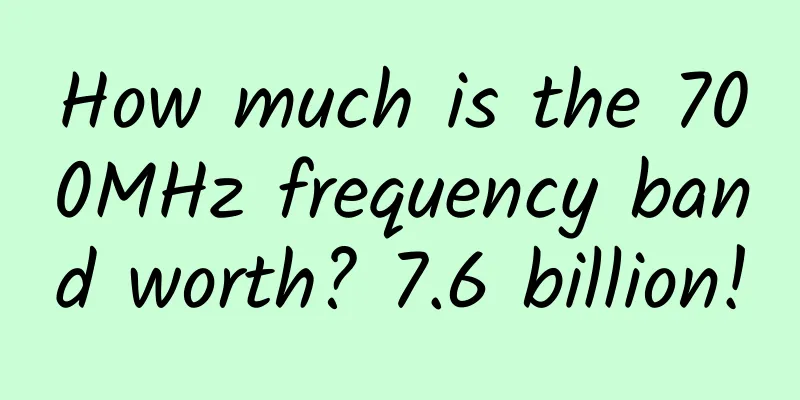Application of Passive WDM Technology in 5G Fronthaul

Labs GuidePassive WDM technology is the main technology used in 5G fronthaul at this stage. Since the speed of 5G fronthaul is as high as 25G, dispersion becomes the main factor affecting 5G fronthaul. This paper introduces the technical principles of passive WDM fronthaul solutions and the wavelength allocation of common models. Through the study of the transmission and dispersion penalty (TDP) index of optical modules, the various influencing factors of TDP and their impact on 5G fronthaul are analyzed. Finally, combined with the transmission index requirements of optical fiber links, deployment recommendations for passive WDM technology in 5G fronthaul are proposed. 1. Introduction5G fronthaul refers to the transmission between DU (distribution unit) and AAU (active antenna unit) in the 5G wireless access network. Currently, 5G fronthaul solutions mainly include: fiber direct drive, passive WDM, semi-active WDM and active WDM. Among various fronthaul solutions, the direct fiber drive solution consumes a large amount of fiber core resources, and the construction of new optical cables requires a certain period of time and is also limited by pipeline and pole resources; the semi-active WDM solution is not yet mature; the active WDM solution is too expensive; and the passive WDM solution has become the main solution for 5G fronthaul at this stage due to its advantages of occupying less optical cable cores, low price, and rapid deployment. 2. Introduction to Passive WDM Fronthaul Solution2.1 Technical Principles of Passive WDM Fronthaul Solution Passive WDM uses wavelength division multiplexing technology, using passive MUX/DEMUX (multiplexer/demultiplexer) to combine multiple optical signals with different wavelengths into one optical fiber for transmission. For example, a 5G macro base station usually has 3 AAUs, and the number of transceiver ports from DU to AAU is 6. Using 1 6-way MUX/DEMUX on the DU side and the AAU side respectively can combine the transceiver signals between DU and AAU into one optical fiber for transmission, as shown in Figure 1. Since MUX/DEMUX is a passive device, each service port needs to use an optical module with a different transmission wavelength, that is, a color optical module. The passive WDM system consists of two parts: MUX/DEMUX and color optical module. Since DU and AAU equipment are usually configured with optical modules with a specific wavelength (usually 1310nm), when using them, the existing optical modules with specific wavelengths (also called gray optical modules) of DU and AAU need to be replaced with color optical modules with the same rate. The commonly used networking structures of passive WDM fronthaul solutions are divided into two types: dual star (see Figure 1) and bus (see Figure 2). The dual star networking structure is mainly used in the fronthaul scenario of 5G macro base stations, and the bus type is mainly used in scenarios such as highways, high-speed railways, and tunnels. 2.2 System Model of Passive WDM Fronthaul Solution Based on cost considerations, passive WDM generally uses CWDM (coarse wavelength division) technology. CWDM supports a total of 18 wavelengths. The commonly used models for 5G fronthaul are 6-in-1 (i.e., 1 fiber transmits 6 wavelengths) and 12-in-1. The wavelengths used by each model are shown in Table 1. Although the 18-in-1 model can be used for 5G fronthaul, the 18-in-1 model uses more optical module models, which increases the difficulty of maintenance. In addition, in a few access networks that use G.652B optical fiber, it will also be affected by the optical fiber E-band attenuation water peak, so it is not recommended. In order to avoid the influence of the E-band attenuation water peak of G.652B optical fiber, the wavelengths of the 12-in-1 model are divided into the first 6 wavelengths (1271nm~1371nm) and the last 6 wavelengths (1471nm~1571nm), while the 6-in-1 model uses the first 6 wavelengths. 3. Impact of dispersion on 5G fronthaul3.1 Transmission and Dispersion Penalty (TDP) of Optical Modules Dispersion refers to the signal distortion caused by pulse broadening after different frequency components of an optical signal (pulse) propagate at different speeds over a certain distance. The effect of dispersion on transmission can be reflected by the Transmitter Dispersion Penalty (TDP) parameter of the optical module. The TDP parameter reflects the degree of signal degradation caused by dispersion after the signal is modulated by the optical module and transmitted by the optical fiber. In actual testing, it is measured by the degree of degradation of the sensitivity of the standard receiving module. TDP is the difference in sensitivity between the following two situations (TDP = S2 - S1):
3.2 TDP index of 5G fronthaul color optical module The TDP index of the 5G fronthaul color optical module is related to the modulation method used by the optical module. The optical module is mainly divided into two types according to the modulation method: DML (Directly Modulated Laser) and EML (Electrro-absorption Modulated Laser). DML emits light of different intensities by directly controlling the current passing through the laser. EML passes a constant current through the laser, and changes the ratio of light passing through an external modulator to obtain light of different intensities. It includes two parts: the light source (laser) and the modulator. When modulating directly, the laser always works in an unstable state, and there are many nonlinear effects that affect the quality of the output. Therefore, DML is generally used in low-speed and short-distance communication systems. Long-distance, high-speed communication systems generally use EML. In addition, the TDP index of the 5G fronthaul color optical module (transmission rate is 25G) is also related to the central wavelength of the laser and the nominal transmission length. The TDP reference value of the color optical module with a nominal transmission length of 10km is shown in Table 2. Due to the limitation of dispersion, DML can only be used for the first 6 waves. Although EML has a smaller TDP, its cost is much higher than DML. Therefore, 5G fronthaul mainly uses DML. However, 4G fronthaul (transmission rate is 10G) is less affected by dispersion. For the 12-in-1 model, the first 6 waves can be used to open 5G fronthaul, and the last 6 waves can be used to open 4G fronthaul. 3.3 Effect of ambient temperature on TDP When the color optical module of 5G fronthaul works in a high temperature environment, the TDP will increase significantly. The longer the wavelength of the color optical module, the more obvious the impact of high temperature on TDP. When the ambient temperature exceeds 70℃, the TDP of the optical module with wavelengths of 1351nm and 1371nm will increase by 2 to 3dB compared to normal temperature (15℃ to 35℃). To reduce the impact of high temperature on TDP, the short-wavelength optical modules of the first 6 wavelengths can be used on the AAU side, and the long-wavelength optical modules can be used on the DU side, as shown in Figure 3. The operating temperature of the optical module is divided into commercial grade: 0 ~ +70 (℃) and industrial grade: -40 ~ +85 (℃). Since AAU is usually installed outdoors, the operating temperature range of the fronthaul optical module is more stringent, so the temperature characteristics of the AAU side optical module should meet the industrial grade requirements. DU is usually installed in the equipment room, and the temperature characteristics of the DU side optical module only need to meet the commercial grade requirements. 4. Fiber optic link transmission indicators4.1 Fiber Link Attenuation The total attenuation of the optical fiber link from DU to AAU includes: optical fiber and fusion attenuation, active connection attenuation and MUX/DEMUX insertion loss. The total attenuation of the optical fiber link can be calculated according to Table 3.
The transmission reference model of the 5G fronthaul fiber link is shown in Figure 4. Based on the fiber link length of 10.0 km and the number of active connections in the fiber link of 7, the maximum full-length link attenuation of the system is 10.5 dB.
4.2 System Optical Power Budget The system optical power budget is mainly determined by the optical power parameters of the optical module, which is "minimum OMA transmit optical power" - "maximum transmit and dispersion penalty (TDP)" - "maximum OMA receive sensitivity". The main optical power indicators and optical power budget of the 5G fronthaul optical module (10km) can be found in Table 4.
The optical power budget of the system should be greater than the full attenuation of the optical fiber link and reserve a maintenance margin of 2 to 3 dB. From the "optical power budget" value in Table 4, it can be seen that the color optical module with a nominal transmission length of 10 km cannot meet the attenuation index requirements of a 10 km optical fiber link in actual scenarios. According to the optical power budget of the system and Table 3, it can be calculated that when reserving a 2 dB maintenance margin, the ideal transmission distance of the color optical module (10 km) under the transmission model of Figure 4 does not exceed 6.3 km. 5. Conclusion and RecommendationsIn summary, due to the high rate of 5G fronthaul, the system will generate a large TDP when the passive WDM solution is adopted. Therefore, the following measures are recommended in engineering implementation:
[This article is an original article by 51CTO columnist "Mobile Labs". Please contact the original author for reprinting.] Click here to read more articles by this author |
<<: 5G has been commercially available for a year. Can consumers still buy 4G mobile phones?
>>: Discussion on 5G network construction plan
Recommend
How are 5G charges calculated: This is what the operators say. Are you willing to pay more?
An operator insider confirmed to IT Times, "...
Is our 5G field booming? Many regions are actively deploying, and the future development potential is worth paying attention to
As an important direction for the evolution and u...
South Korea's three major operators launch service to convert paper documents into text messages
SK Telecom, Korea Telecom and LG Uplus have teame...
Data Cabling: How to Plan Ahead?
Data cabling is an important channel for enterpri...
Will 5G base stations emit more radiation than 4G base stations? I finally figured it out
Despite repeated popularization of knowledge, man...
The essence of 5G is speed upgrade! Packages will become cheaper and cheaper
[[356187]] About two years ago, when 5G had just ...
"5G packages are a bit expensive": You said the same thing in the 3G and 4G eras
The following are the key points of the article: ...
South Korea passes budget to encourage virtual operators to participate in 5G competition
South Korea's Ministry of ICT recently said t...
Have you fallen for the rumors and scams about 5G?
Since the birth of mankind, cutting-edge technolo...
5G will become a necessity in our future
Most of the 5G networks currently available are n...
The number of 5G mobile phone terminal connections of the three major operators reached 260 million, accounting for 16.3% of mobile phone users
Recently, the Ministry of Industry and Informatio...
The three major operators are launching preferential packages. How do you “change to a new one”?
Recently, some mobile phone users have found that...
Huawei obtains the world's first PUE test certificate for micro-module products
The 4th Data Center Infrastructure Summit was suc...
Fast, intelligent, and secure cloud application delivery is the new trend in 2017! F5 invites you to start a more free cross-cloud journey
[51CTO.com original article] Cloud computing has ...
5G gas stations require mid-band frequencies
If an industry wants to develop, the first thing ...









